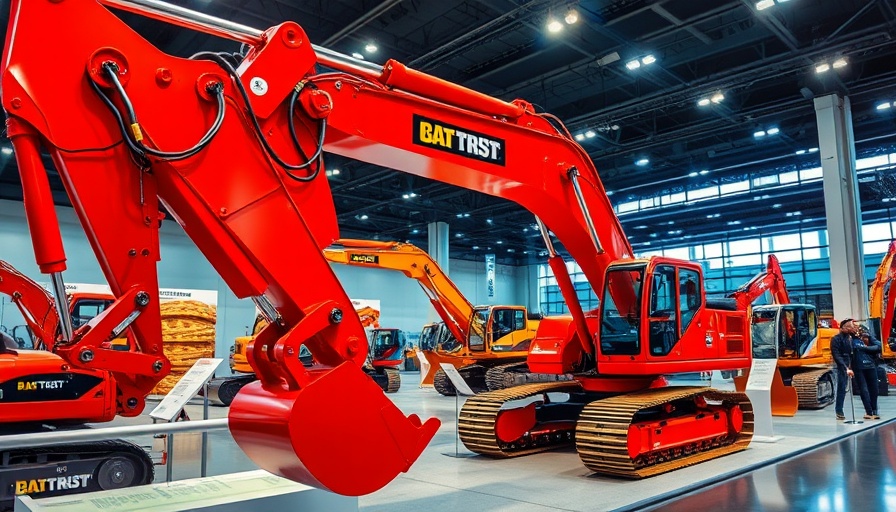
Excavator Sales Surge: Understanding the Trends for 2024
In the ever-evolving landscape of construction equipment, excavators have taken the lead recently, with U.S. contractors experiencing a notable uptick in purchases. According to Fusable’s EDA equipment finance data, the market saw a remarkable 15% year-over-year increase in sales of new excavators, with 16,697 units financed from February 2024 to January 2025 as compared to 14,505 units during the same period the previous year. This increase reflects a growing confidence in the construction sector as new projects take off.
The Shift in Manufacturer Dominance
Despite maintaining its reputation, Caterpillar, commonly referred to as Cat, witnessed a decline in market share, falling from 29.1% to 25% of total new excavator sales. Meanwhile, John Deere has stormed into the spotlight, experiencing a stunning 31.8% increase in units sold, enabling it to surpass Komatsu, which could only muster a 6% rise. This shift illustrates how competition within the market is intensifying and the importance of innovation in order to maintain sales.
Highlight on Top-Selling Models
The competition among brands is showcased through the performance of individual models. The top three new excavators financed were the Kubota KX080-5, with 656 units sold, followed by John Deere’s 85 P-Tier at 545 units and Cat’s 340 at 471.
Kubota unveiled the next generation of its largest compact excavator, the KX080-5, at the World of Concrete 2024. The new model boasts enhanced features designed for ease of operation, including a more spacious and quieter cab, advanced load-sensing hydraulics, auto-idling, and an auto-engine stop functionality.
Deere's new 85 P-Tier, which debuted at Conexpo 2023, comes with significant upgrades over its predecessor, including an 18% increase in horsepower and improved hydraulic flow, aiming to address market demands for efficiency and reduced maintenance costs.
Regional Insights: Where Are the Buyers?
The geographic distribution of buyers indicates that Texas leads the charge in new excavator purchases, financing 1,958 units. Florida follows in second place with 1,105 units financed. This regional data points to the state being a hub for construction activity, suggesting robust growth opportunities for contractors in these areas.
Future Trends and Predictions
Looking forward, the demand for excavators is expected to remain strong due to a growing infrastructure push across the U.S. Government investments aimed at rebuilding aging infrastructure, coupled with an increase in residential and commercial projects, are likely to sustain the upward trend of excavator sales. This growth presents a ripe opportunity for contractors to expand their fleets with modern, efficient equipment.
The Importance of Staying Updated
As the construction industry continues to adapt to new technologies and market demands, staying informed about trends in equipment sales can provide contractors with a strategic edge. Understanding what equipment is in demand and the leading manufacturers in the market helps contractors to make informed decisions, ensuring that their operations remain competitive.
Conclusion: Seize the Opportunity in the Excavator Market
With a clear trend of increasing excavator sales, now is an ideal time for contractors and construction businesses to evaluate their equipment needs. Whether it's expanding your current fleet or upgrading to newer models that promise efficiency, being proactive in these decisions can significantly impact future project success. Stay ahead of the curve, and make those informed choices today!
 Add Row
Add Row  Add
Add 




Write A Comment